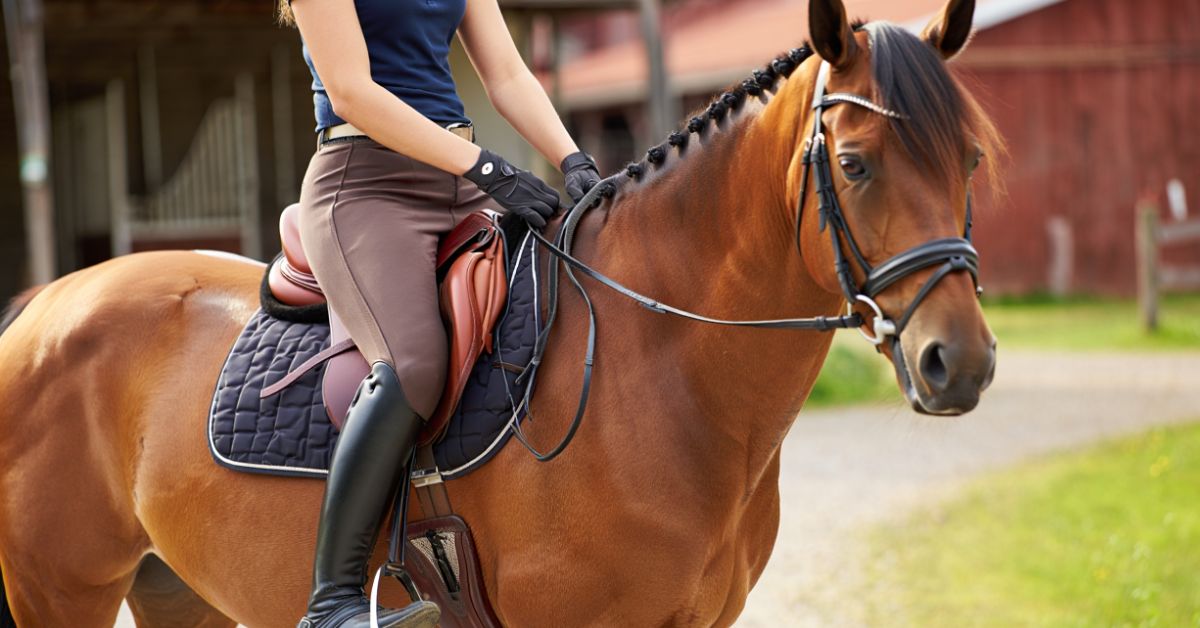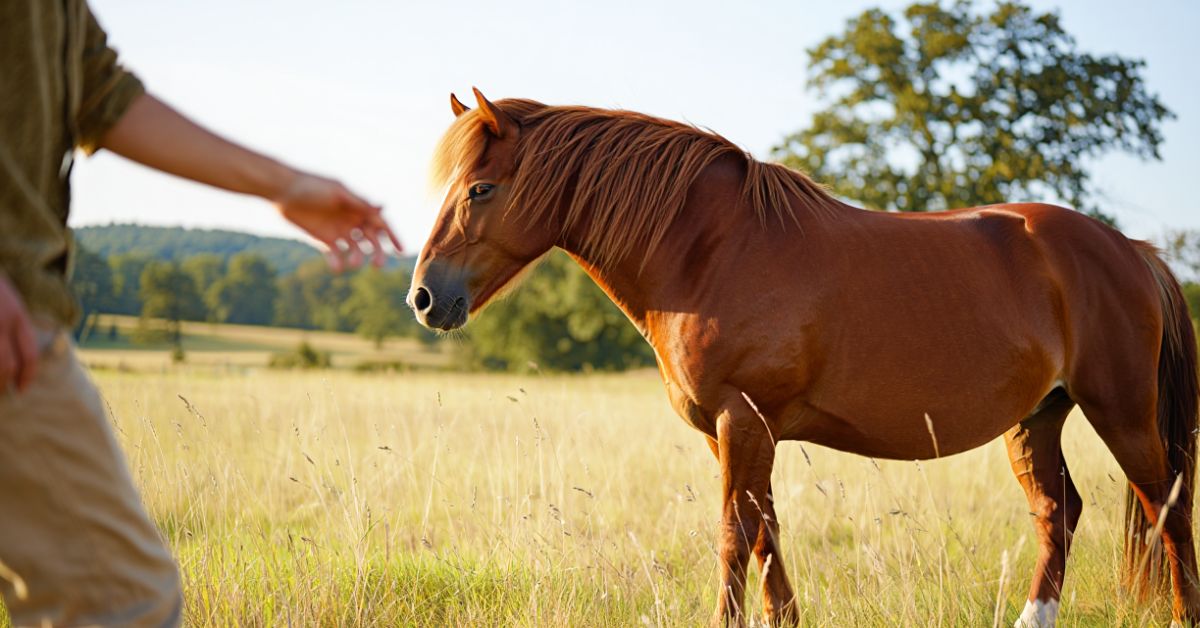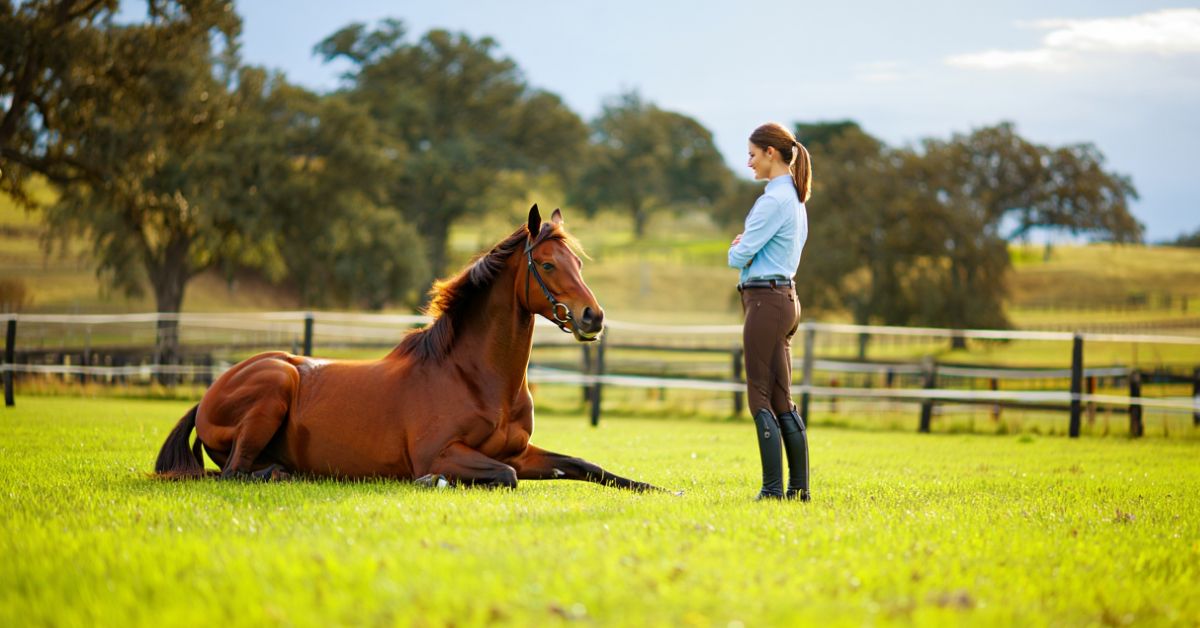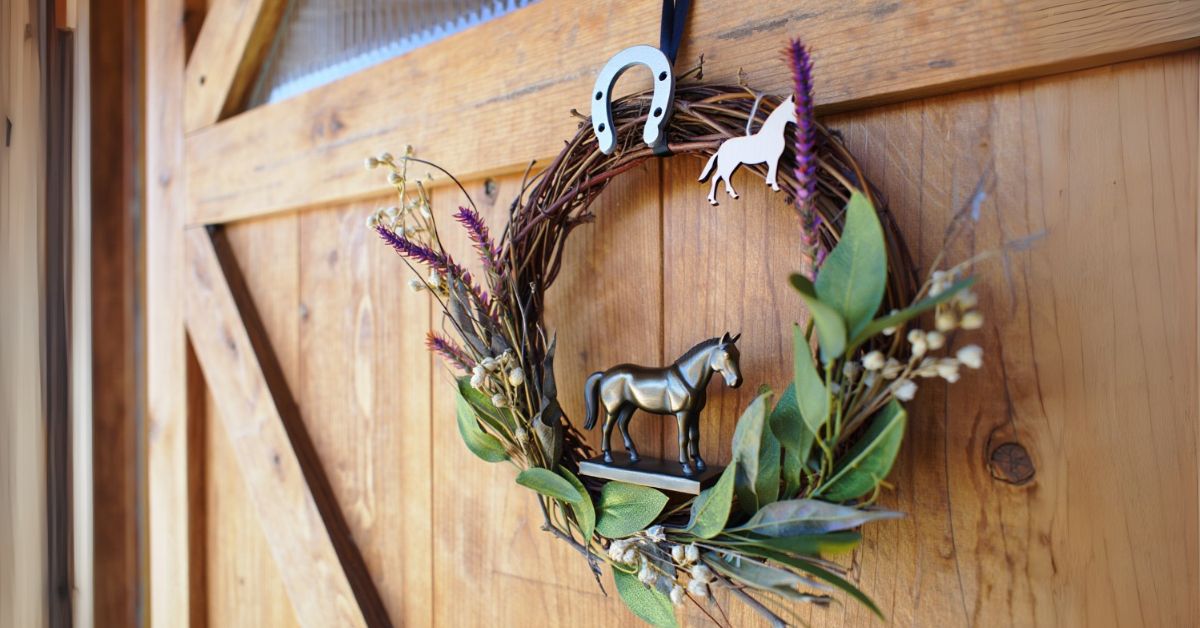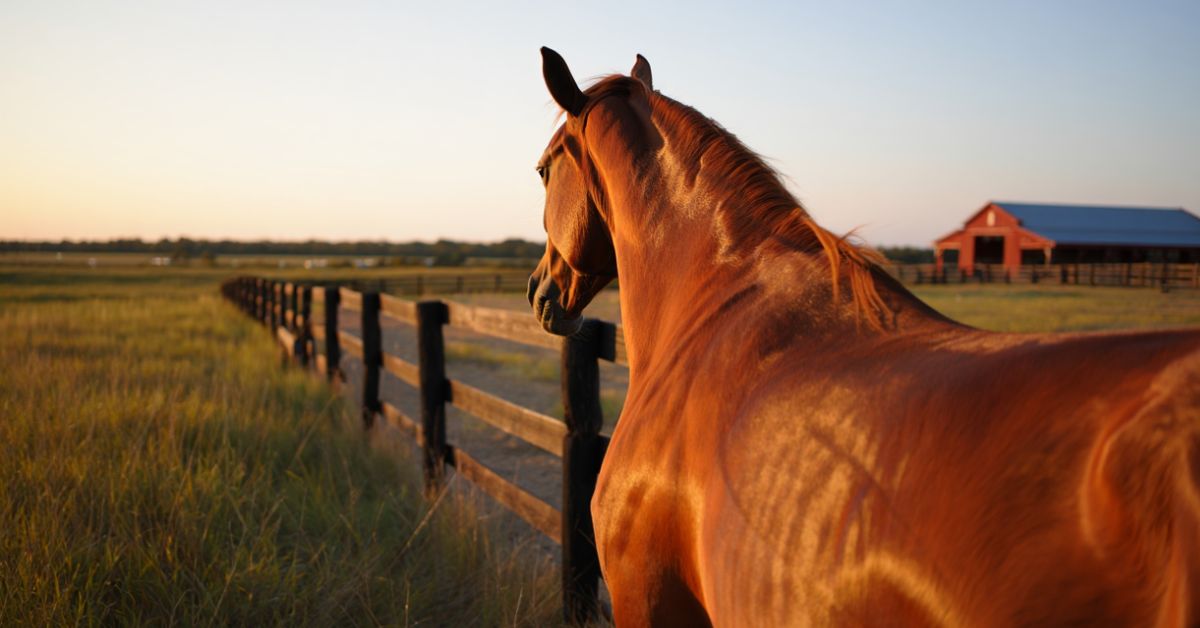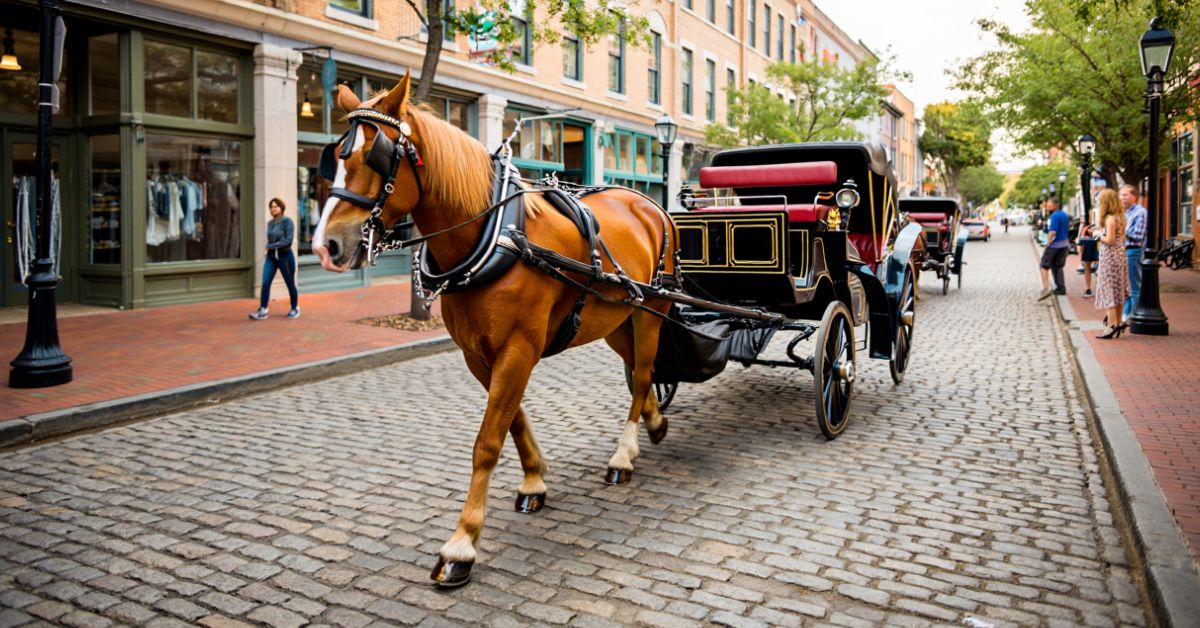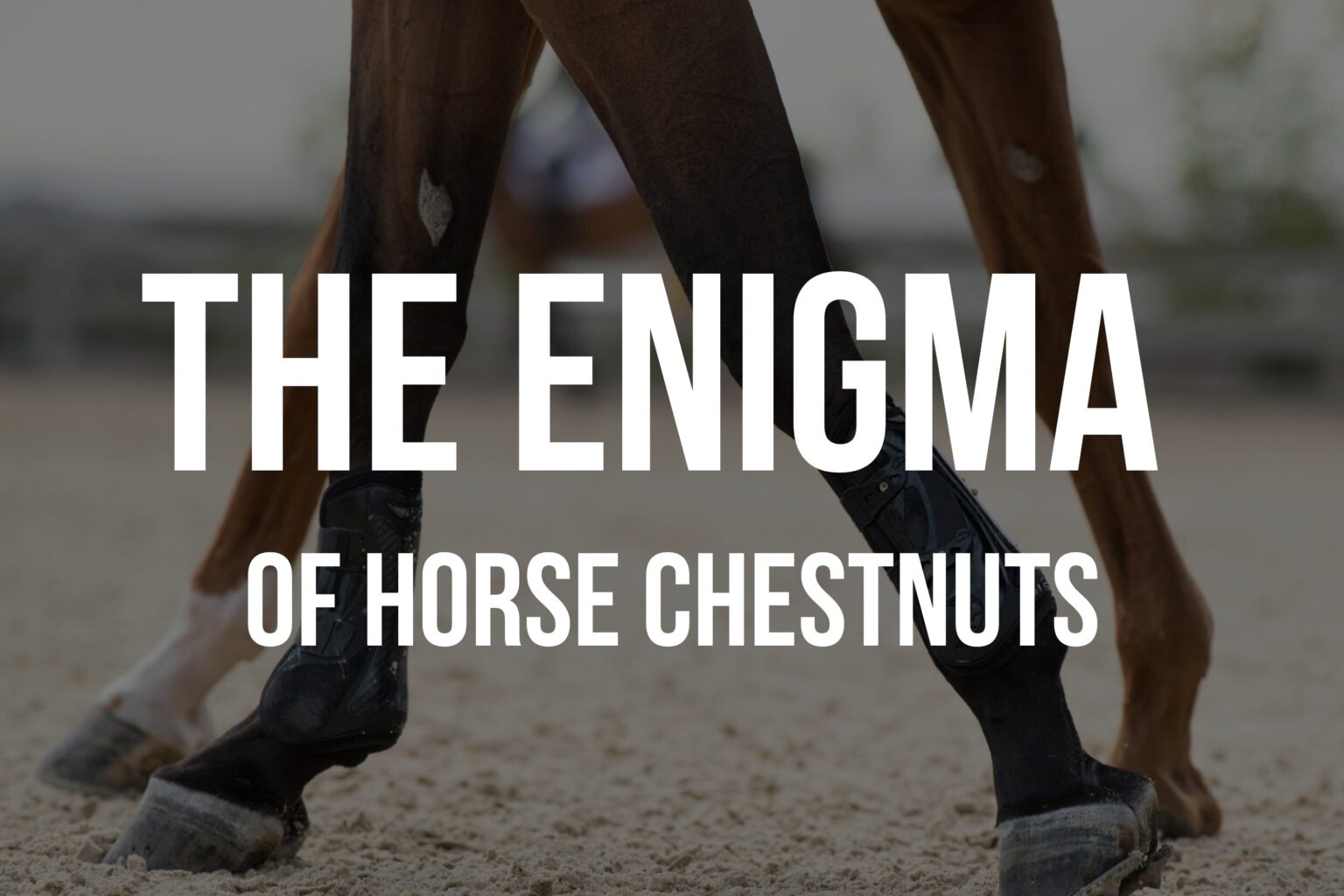
What is a chestnut on a horse?
A chestnut on a horse refers to a callous area of hairless skin, often round or oval shaped, usually located on the inner side of a horse’s legs. Chestnuts are common markings that many horse breeds can have.
Why Do Horses Have Chestnuts?
Chestnuts likely once served an evolutionary purpose for horses in the wild. These areas of thickened hairless skin probably helped protect horses’ legs and tendons from injury while running through brush and other vegetation.
Over time as horses were domesticated, the need for this protective callous skin decreased. But the genetic code for chestnuts remains present in most horses today.
While chestnuts no longer serve much function, they remain a common marking pattern in many modern horse breeds.
Where Are Chestnuts Located?
Chestnuts are usually located on the inner side of a horse’s legs, near the knee or hock joint. The most common locations are:
- Forelegs: The inner side of the knee is where chestnuts typically occur on the front legs. They can be found on one or both forelegs.
- Hind legs: The most common place to find hind leg chestnuts is the inner side of the hock, sometimes called the “night eyes.” Again, they may occur on a single hind leg or both.
So in summary, the most typical spots are by the knee and hock joints inside the legs. But chestnuts can occasionally show up higher on the forearm or gaskin as well.
What Do Chestnuts Look Like?
The appearance of chestnuts can vary between individual horses. But here are some general characteristics:
- Shape: Chestnuts often have a round or oval shape. But they can sometimes be more irregularly shaped.
- Size: Most range from around 0.4 inches to over 2 inches (1-5 cm) across, though smaller and larger are possible.
- Color: Since they are hairless, chestnuts match the skin pigmentation. So they often appear pinkish or black in color.
- Texture: The surface feels hard and calloused to the touch. The skin is thickened and tough on chestnuts.
So in summary – roundish, hairless areas of toughened skin ranging in size and color. When present, they stand out from the surrounding leg coat.
Are Chestnuts the Same as Night Eyes?
This is a common source of confusion regarding markings on horses. But while they share some similarities, chestnuts and night eyes are not the same.
The key differences are:
- Location: As outlined above, chestnuts are typically found around the inner knee and hock. In contrast, night eyes specifically refer to the hock chestnuts only.
- Number: Horses usually only have 2 night eyes (1 by each hind leg hock). But they can have up to 4 chestnuts total (near both front and hind leg joints).
So in summary:
- Chestnuts = Callous skin markings that can occur by knees and hocks
- Night eyes = Term for the hind leg hock chestnuts specifically
While night eyes are one type of chestnut marking, the terms are not completely interchangeable.
Are Chestnuts Present at Birth?
Foals are not born exhibiting visible chestnuts. These markings typically begin growing and becoming noticeable within the first few months after birth.
Initial growth often starts around 2-4 weeks old. But significant development and thickening of the skin usually happens between 3-7 months of age as the lower legs mature.
By one year old, most horses with the genetic disposition will have clearly visible chestnuts. These markings are considered established by two years old in most cases.
So in summary – chestnuts are not innate markings, but rather develop gradually as a foal’s legs grow during the first year.
Can Chestnuts Be Surgically Removed?
Because chestnuts serve no real purpose in domesticated riding horses, some owners opt to have them surgically excised for cosmetic reasons. However, removal is somewhat controversial.
The surgery does permanently eliminate the calloused skin. But complications like infection and slow healing can occur. And the procedure removes protective skin coverage over critical leg structures.
So many vets advise leaving well-developed chestnuts intact to avoid risks. Especially since their presence causes no problems in the vast majority of horses.
However in rare cases of trauma, infection, or discomfort, surgical removal may be recommended. This is usually only done for hind leg hock chestnuts very close to the joints.
5 Key Questions Related to Chestnuts on Horses
Here are answers to 5 of the most frequently asked questions about equine chestnut markings:
Do chestnuts grow back after being surgically removed?
No. Surgically eliminating developed chestnuts destroys the source tissue. So unlike hair, these callouses will not regrow once excised. Only an undeveloped small chestnut might regenerate over time.
What causes some horses to get chestnuts but not others?
Genetics determines whether a horse inherits the trait for chestnut growth. The specific mechanisms are not fully research yet. But the markings can be passed on selectively just like some coat colors or facial patterns.
Are horses faster if they have chestnuts?
There is no evidence that chestnuts provide a speed benefit. While they may have originally served a protective evolutionary purpose, these callouses do not affect running ability in domestic horses.
Can chestnuts get infected or problematic if not cared for?
Yes, though uncommon. Like any area of skin, chestnuts can develop fungal or bacterial infections if constantly wet, dirty, or irritated. Keeping them clean helps prevent issues. Notify your vet of any persistent skin abnormalities.
Do chestnuts appear in both stallions and mares?
Yes. Chestnuts are an equal opportunity marking! Unlike some gender-influenced traits, there is no difference in chestnut occurrence or development between females and males. Both fillies and colts exhibit them at similar rates.
In Conclusion
While of less consequence in modern horses, chestnuts remain a common marking with an interesting evolutionary history. These areas of calloused skin still appear in characteristic locations on many horses and serve as a reminder of the species’ wild origins.
Hopefully this guide has helped explain what defines an equine chestnut marking, why horses have them, and answered some other frequently asked questions. Though of little modern utility, chestnuts remain a unique facet of most horses’ lower legs.

